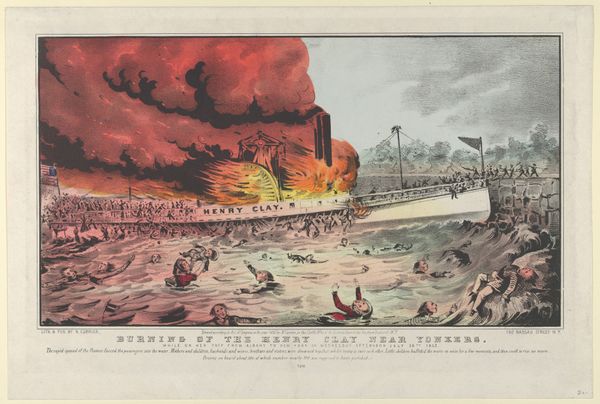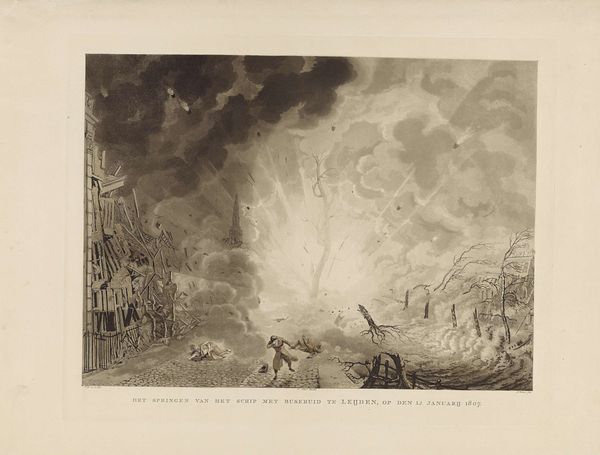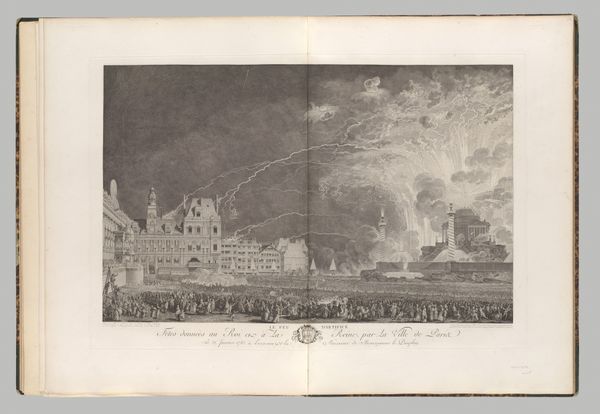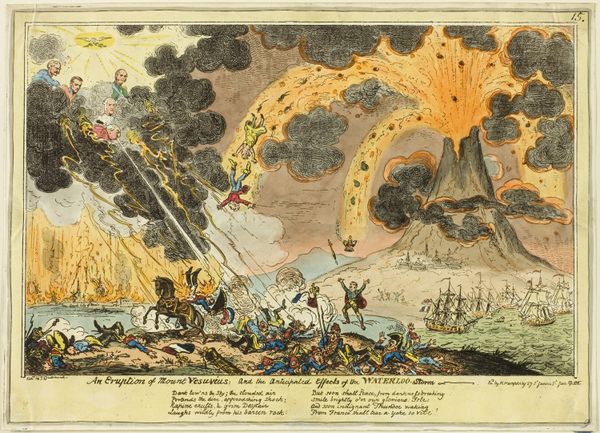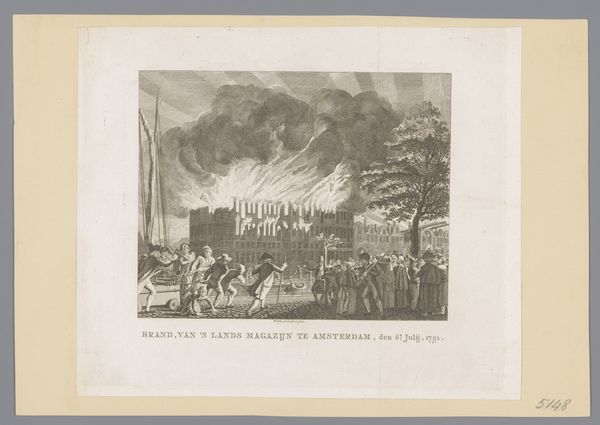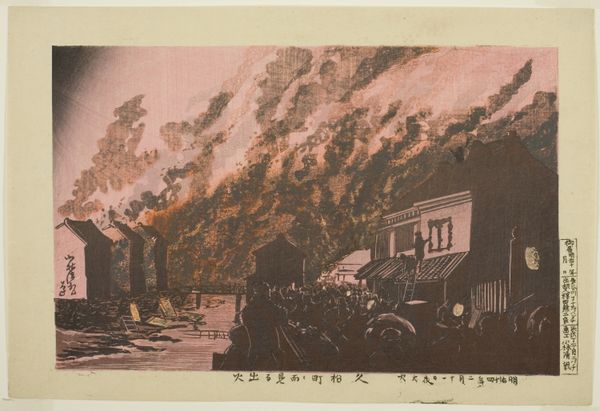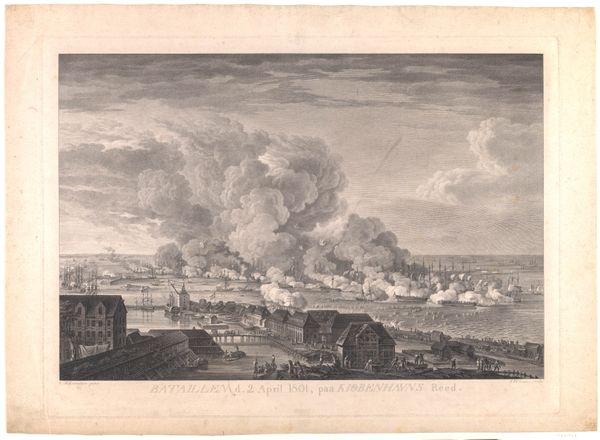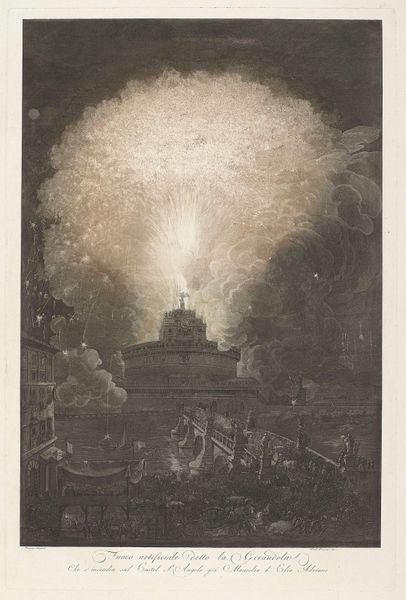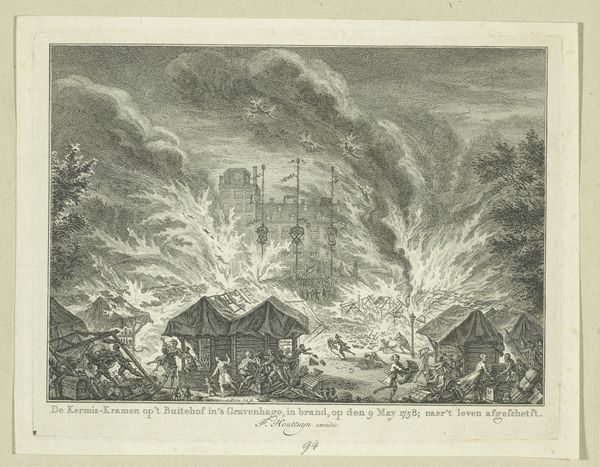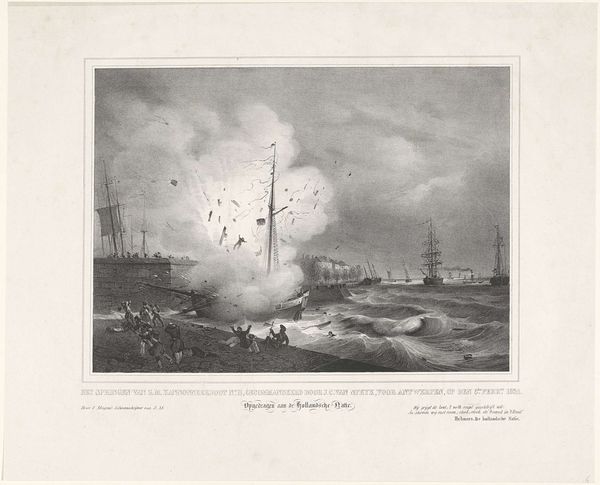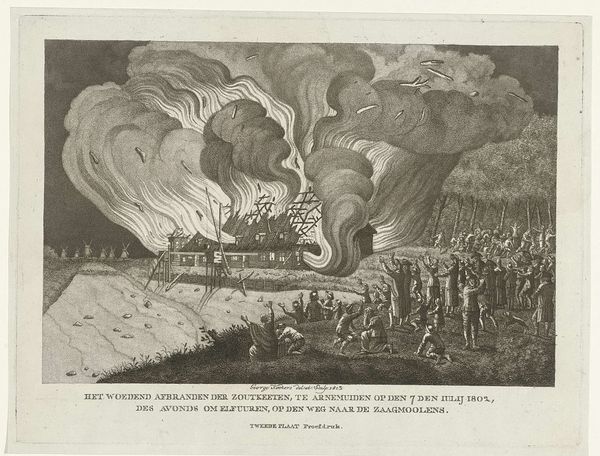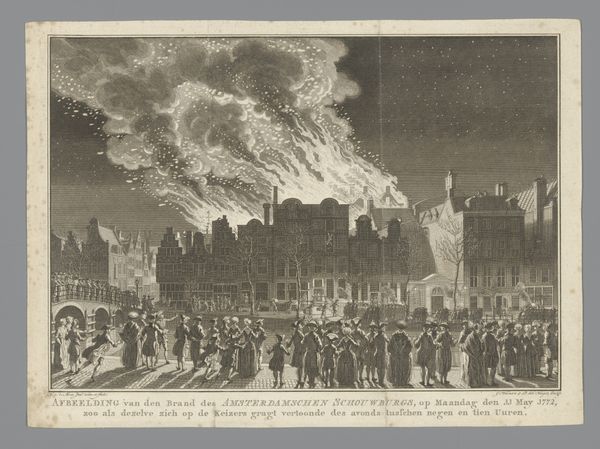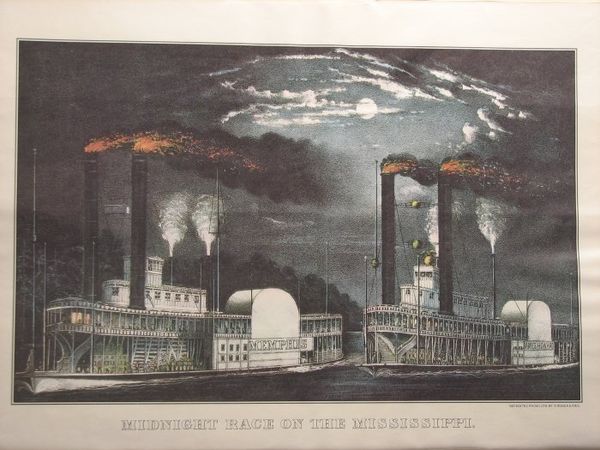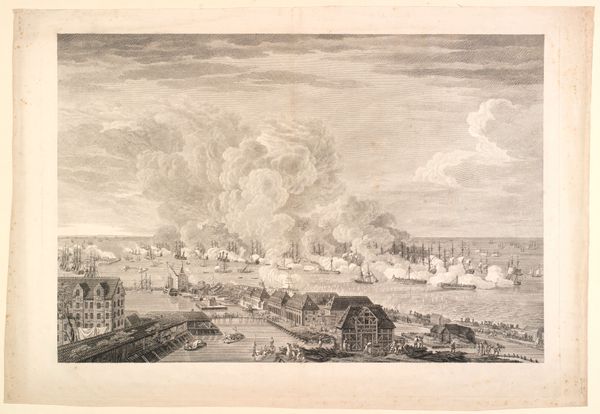
"Bombardamentets rædselsfuldste Nat. Kiøbenhavn den 4-5- Sept. 1807" 1807
0:00
0:00
aquatint, print
#
aquatint
# print
#
landscape
#
romanticism
#
cityscape
#
history-painting
Dimensions: 241 mm (height) x 366 mm (width) (bladmaal)
Editor: This aquatint print from 1807 by Niels Truslew, titled "The Most Horrific Night of the Bombardment. Copenhagen 4-5 Sept. 1807," depicts the city under attack. The red sky and fiery explosions immediately evoke a sense of chaos and destruction. What do you make of this depiction? Curator: It's crucial to consider aquatint as a medium itself. This wasn't sketching at the scene, but rather a calculated act of reproduction. The use of aquatint allowed for the mass production of this image and, by extension, its widespread consumption. The subject matter – the violent bombardment – served not just as a historical record but as a powerful commodity for public consumption, stirring patriotism and anger. The creation of an image is itself an act within the society that produced it, do you agree? Editor: Yes, definitely. Thinking about the materials and how they contribute to disseminating the image so widely puts it in a whole new context. It's not just about documenting the event; it's about shaping public perception. Does the specific choice of aquatint suggest anything about the intended audience or the message Truslew wanted to convey? Curator: I would suggest it does. Aquatint, while capable of delicate tonal variations, lent itself well to creating dramatic and easily reproducible scenes, making the horror of the bombardment accessible. The widespread consumption of this print tells us of a market – one eager to consume images of national trauma, transforming suffering into a commodity and fuelling social cohesion. Look how these falling “stars” dominate and almost ridicule the smallness of human effort – tiny guards, city wall…. Editor: It’s sobering to think about how even images of destruction become integrated into a market economy and how we consume them. It's completely changed my view of the artwork. Thank you for this approach. Curator: And thank you for exploring it with me. The production and consumption of this aquatint were deeply intertwined with the political and social context of the time.
Comments
No comments
Be the first to comment and join the conversation on the ultimate creative platform.
